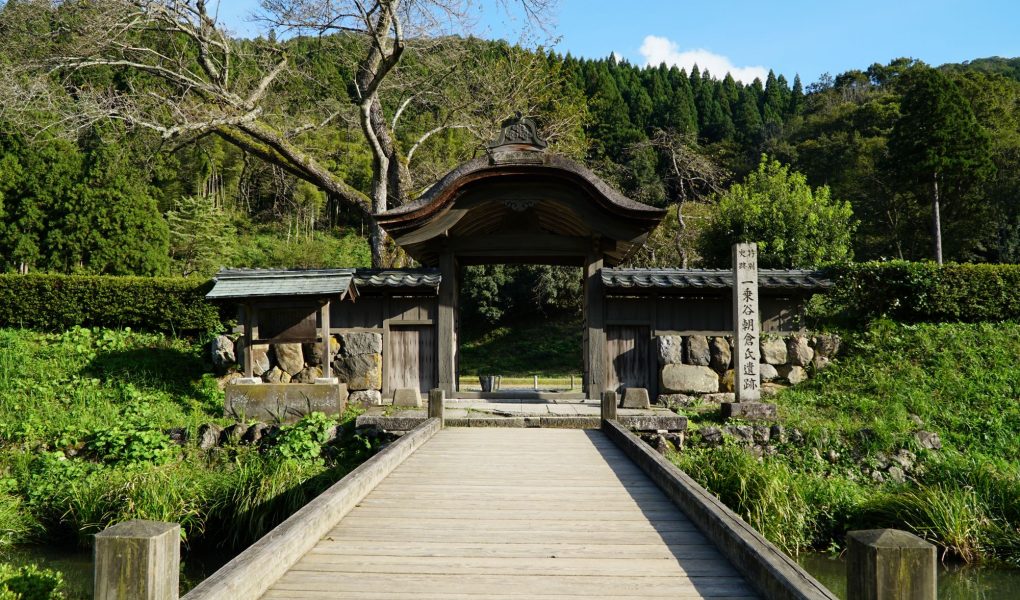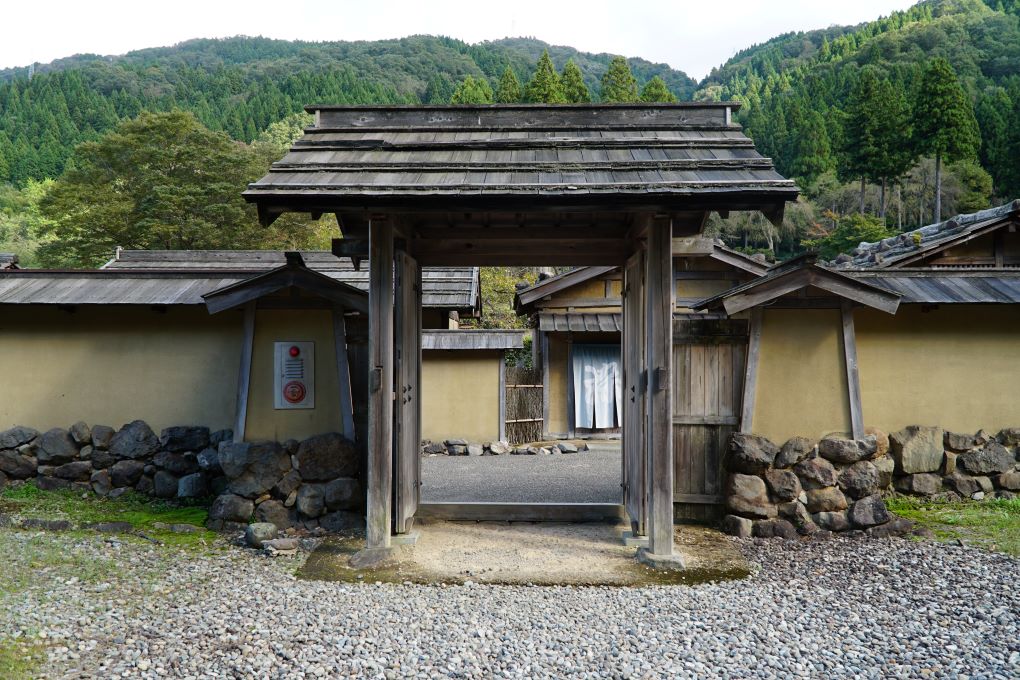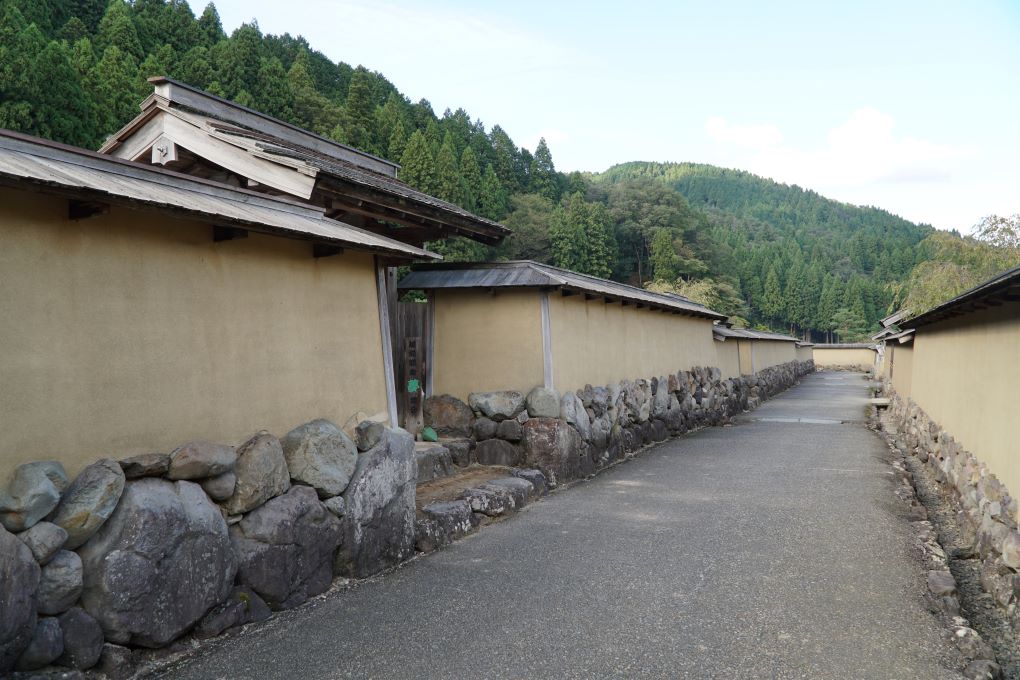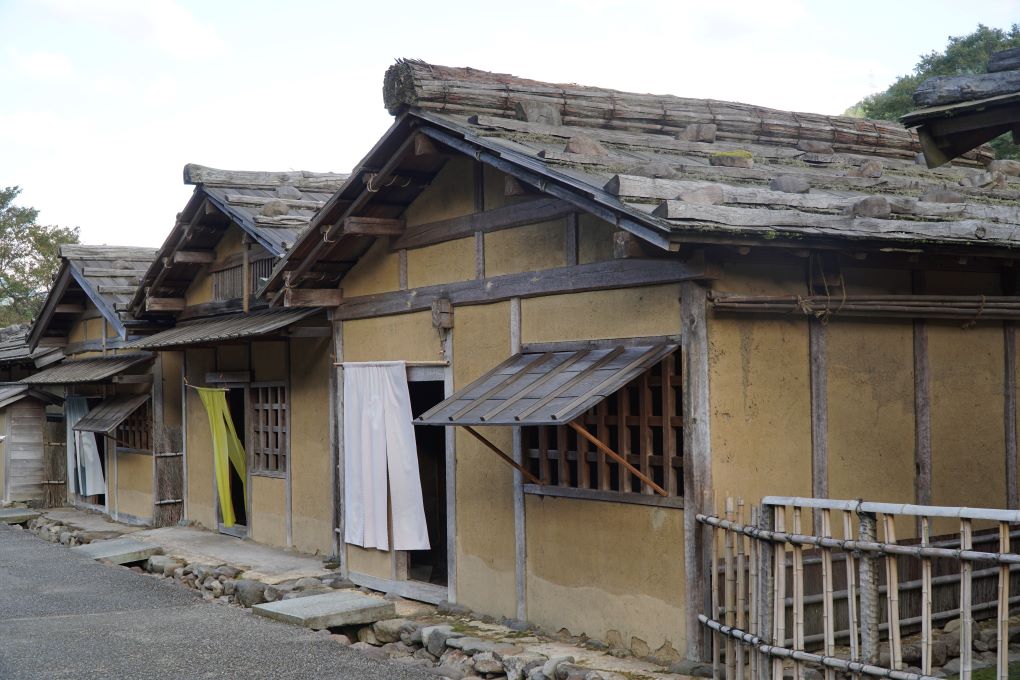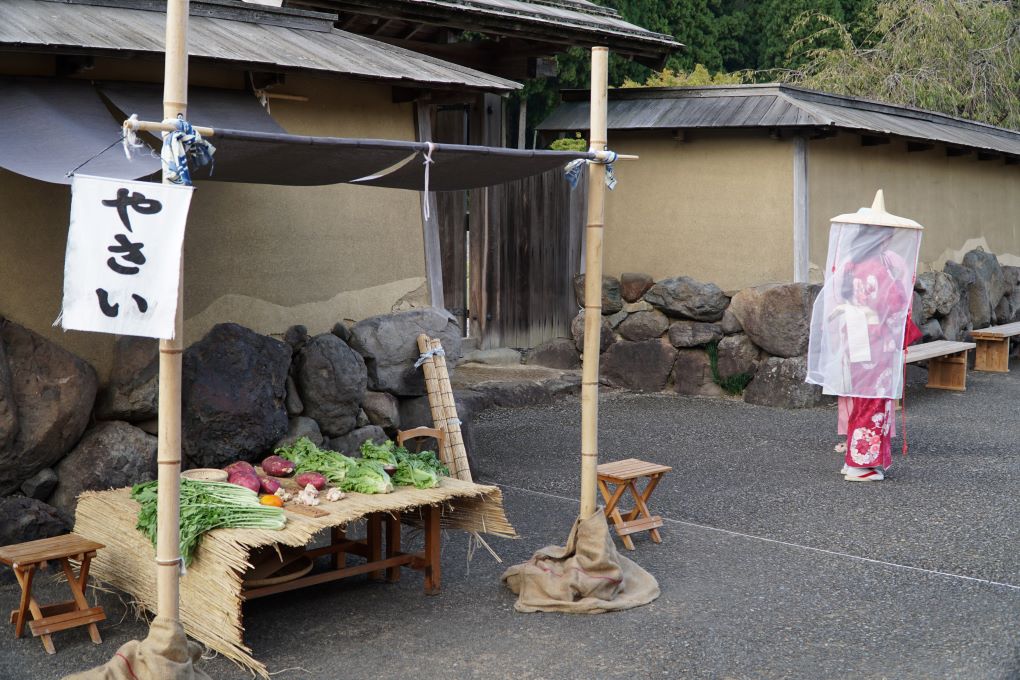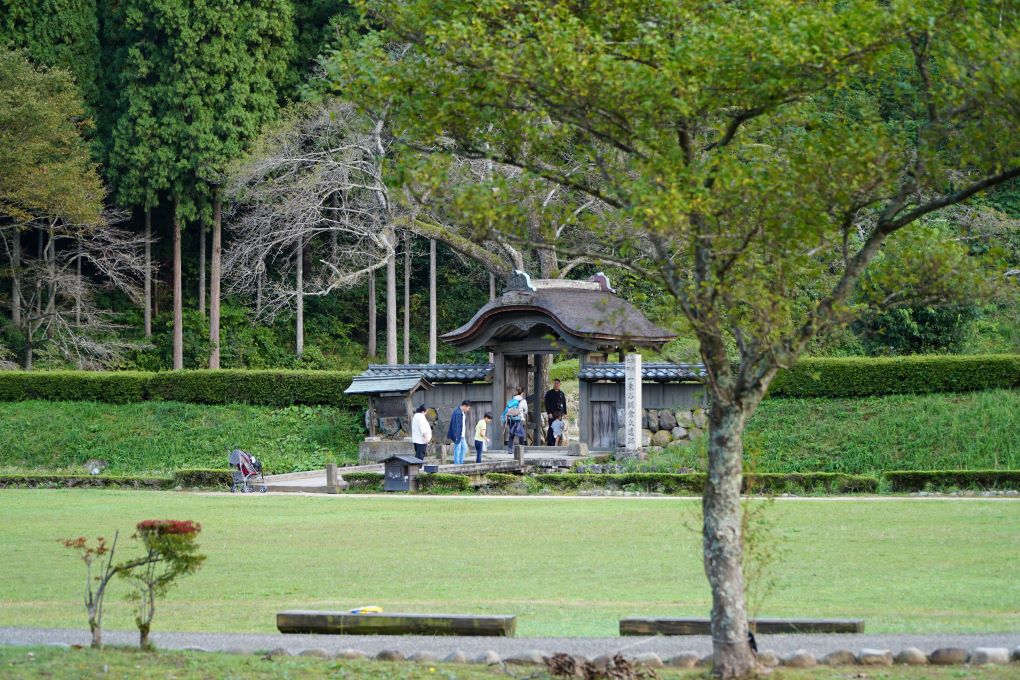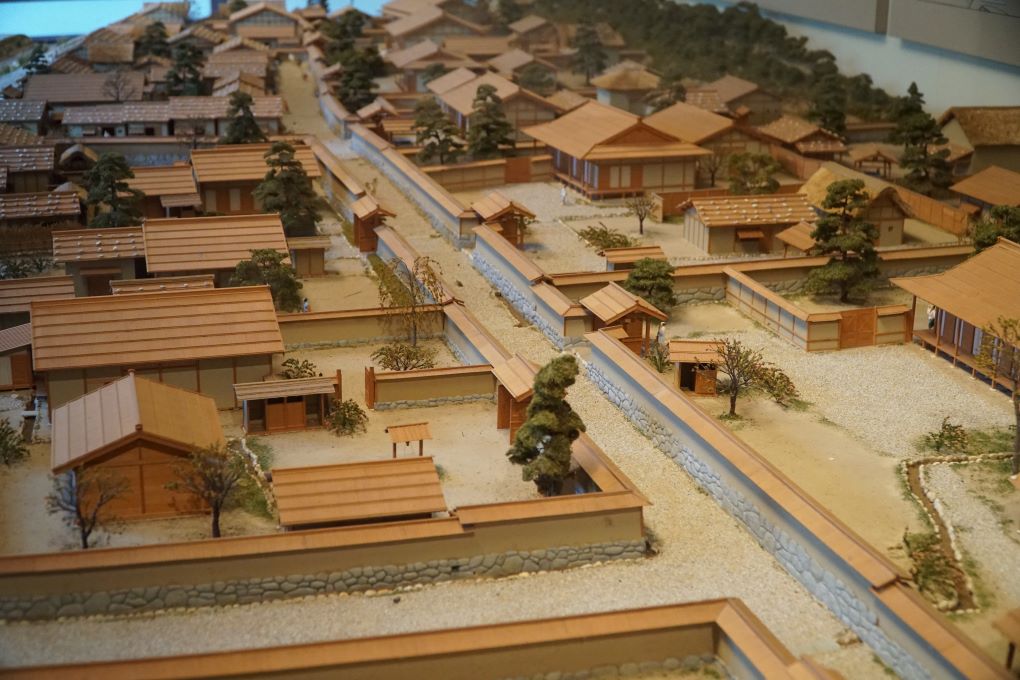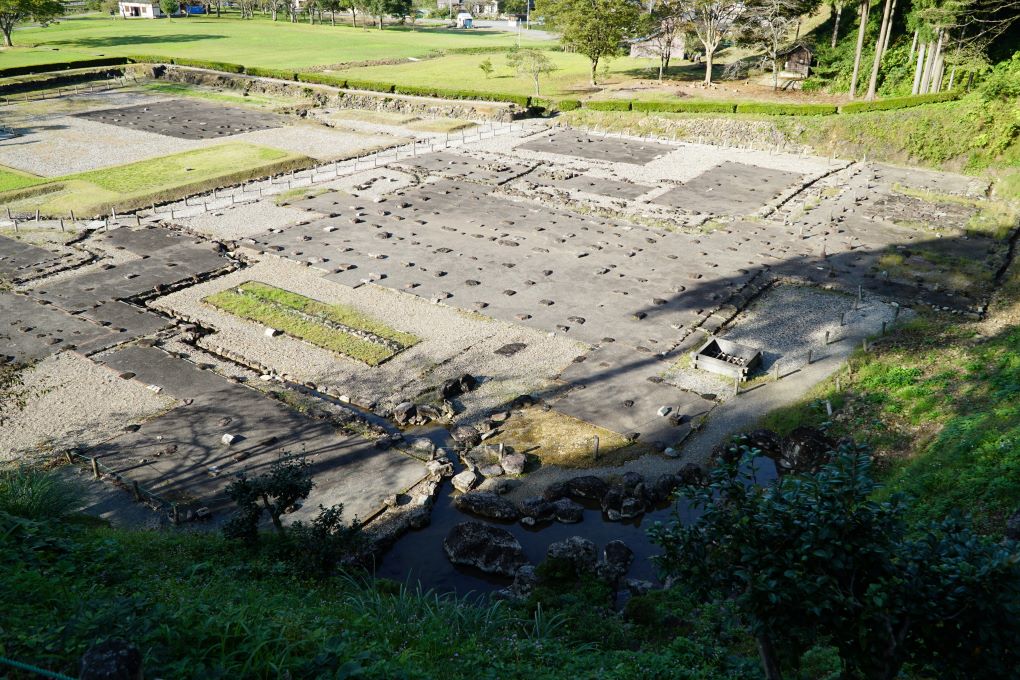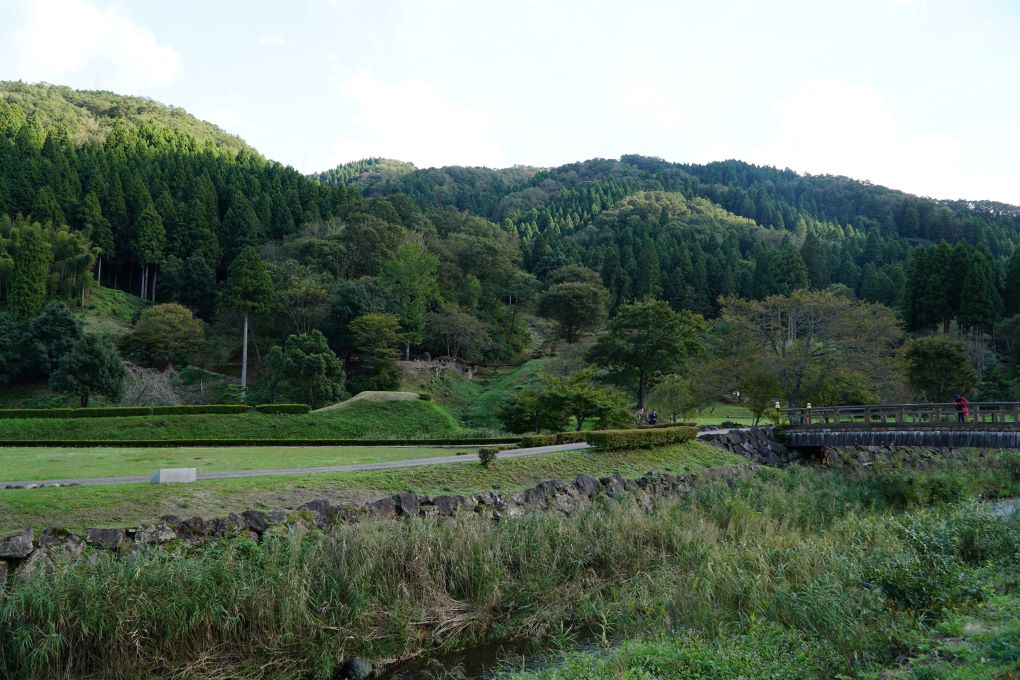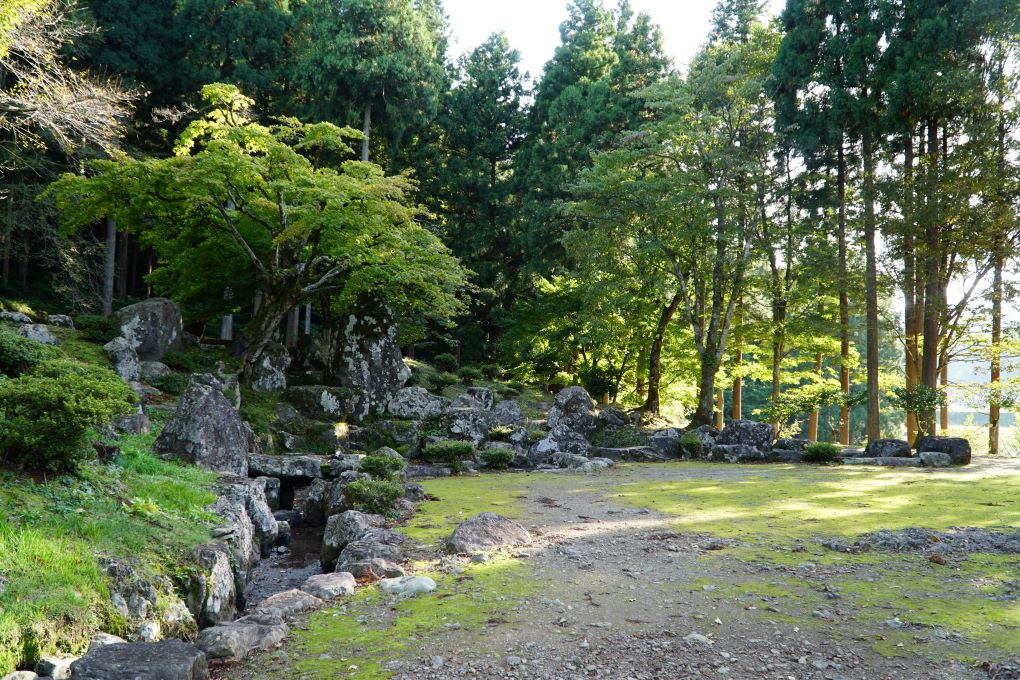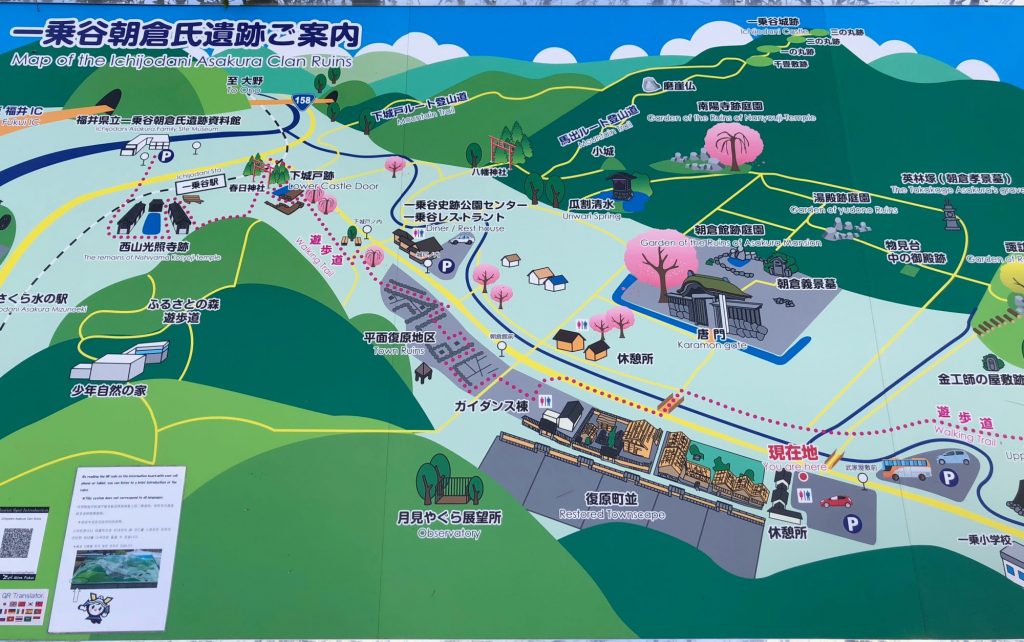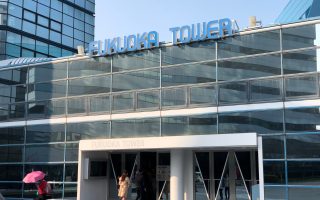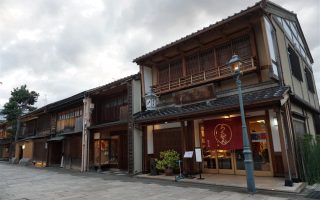Ichijōdani Asakura Clan Historic Ruins in Fukui Prefecture are the remains of the once big and prosperous Ichijōdani castle town. The town, which was once populated by as much as 10’000 people, was completely destroyed during the 1573 Siege of Ichijōdani Castle. Today, a 200 meter stretch of the ruins have been reconstructed with walls and furnished houses. With a ticket it is possible to enter the reconstructed area and get a feeling for how the town would have been in the 1500’s. You might even run into some actors, dressed in typical clothes of the period. The surrounding area contains a large number of ruins, including those of some Japanese gardens.
The Ichijōdani ruins have been designated a Special Historic Site and the garden remains are, as a group, categorized as Special Places of Scenic Beauty by the government. The area of ruins, aside from the reconstructed town, can freely be explored.
Hotels in Fukui Hokuriku Arch Train Pass
From 1573, the remains of Ichijōdani castle town slowly disappeared under rice fields and vegetation. For centuries the ruins were hidden and forgotten, until 1967 when excavations started. Around 1.7 million artifacts have been recovered during the excavation efforts, and more than 2300 of those artifacts have been categorized as Important Cultural Properties by the government. Some of these items can be viewed at the Ichijodani Asakura Family Site Museum which is located close to Ichijodani Station.
All photos © touristinjapan.com
The ruins of the actual castle are located on the hilltop above the valley. It is a great view point, from where one can get a sense of the valley and how large the settlement used to be. However, if you expect to see a castle you will be disappointed. Like most of the ruins, mostly outlines of rock are visible.
Ichijōdani castle town is sometimes compared to Pompeii in Italy, because the town was completely destroyed and forgotten, just to be rediscovered centuries later. Ichijōdani Asakura Clan Historic Ruins makes for a great day trip when combined with a visit to the nearby Eihei-ji Temple.
All photos © touristinjapan.com
History of Ichijōdani
The Sengoku Period
The history of Ichijōdani castle town is a tragic one, which centers around a complex period of Japanese history known as the Sengoku period or “The Age of Warring States” (approx. 1467-1603). This ~130 year long civil war started when the feudal system collapsed following the Ōnin War in 1467. The Ashikaga Shogunate, which was ruling at the time, slowly lost power to rebelling lords and commoners, and the Ashikaga rule was finally overrun in 1573, when Nobunaga drove the last Ashikaga shogun out of the capital (Kyoto). In the following period, Nobunaga was the first of three lords who, with some success, attempted to unify Japan. The second “unifier” was Toyotomi Hideyoshi and the third, Tokugawa Ieyasu who finally managed to unify Japan to one, peaceful country around 1603.
All photos © touristinjapan.com
Ichijōdani and the Asakura Clan
In the early 1470’s, the Asakura Clan had won the Echizen Province from the Shiba Clan, and decided to make Ichijōdani their headquarters. The construction of fortifications on the surrounding hills started soon thereafter, and walls were even put up at each end of the valley, to keep intruders out. Within this closed-off area, the Asakura family had their residence constructed. Over time, the area turned into a big town, with temples, samurai district, merchants and artists.
With the civil war raging, especially around the capital Kyoto, a lot of people were looking to escape the fighting. Many artistically skilled people were offered refuge in Ichijōdani by the Asakura family, eventually resulting in a sprawling and cultural city with as much as 10’000 residents.
The Asakura clan had kept good relations with the Ashikaga shogunate during the raging wars. After the last Ashikaga shogun was forced out of Kyoto, he asked the Asakura clan for help in defeating Nobunaga and recapturing Kyoto. As a counter, Nobunaga started an invasion of the Echizen Province where the Asakura clan reigned. Nobunaga was successful with his invasion, and one result hereof was the complete destruction of Ichijōdani in 1573.
All photos © touristinjapan.com
Planning your visit
| Hours | 9:00 – 17:00 Closed around new year. |
| Entrance fee | ¥220 adults. ¥250 combined ticket incl. access to the museum |
| Website | Asakura Archaeological Society website |
| Accommodation | Hotel Fujita Fukui☆☆☆☆, Dormy Inn Fukui ☆☆☆, Kawajin Ryokan ☆☆. Find More Hotels in Fukui. |
Getting there
By train: From Fukui Station, take the JR Kuzuryu Line in direction of Echizen-Ono and get off at Ichijōdani Station. The train takes just under 20 minutes and costs ¥240. The train is covered by the Japan Rail Pass. From Ichijōdani Station it is a 30 minute (2.4km) walk to the visitor center. Be aware that the trains to and from Ichijōdani Station are very infrequent as it is a small, local train line.
By bus: From Fukui Station, take Keifuku bus #62 in direction of Jokyoji and Shikaoi. Get off at the stop “Fukugen-Machi-Nami” (復原町並) which is located next to the visitors center. The fare is ¥680. You can find the schedule on the website of Keifuku Bus Company.
? Keifuku Bus official website
From Eihei-ji Temple: While not well documented, it is fairly easy to transfer from Eihei-ji to Ichijōdani Asakura Ruins by bus. A bus departs from Kyofuku bus stop in the city, and stops right by the ruins visitor center. A bus ticket can be purchased inside the restaurant next to the confectionary shop – just by the bus stop. Busses leave 2-3 times per hour between 9:00 and 15:00.

